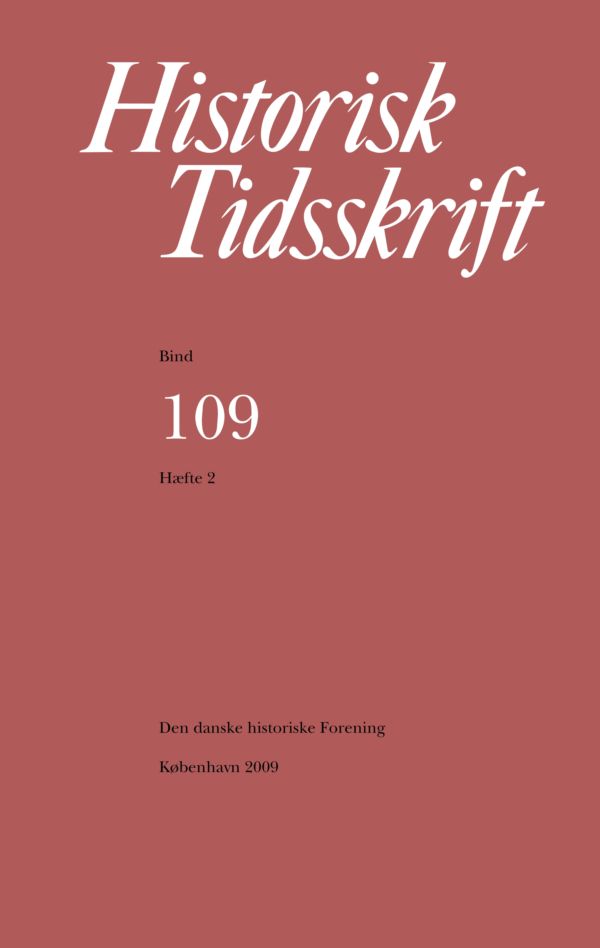Hellighed og magtspil. Helgenkåringens vanskeligheder i Danmark efter 1234
Resumé
Holiness and Power Game The Trouble with Canonization in Denmark after 1234 After Gregor IX in 1234 decreed that granting sainthood was a papal prerogative, no one was canonized in Denmark. Some attempts at promotion were made, though. Niels, a late 12th century Dane of royal blood, and the Danish King Eric IV (Plovpenning) (murdered 1250) are prominent examples. In both cases, applications were sent to Rome in the 1250s. Regarding a Danish woman, Margaret, sources are scarcer, but an application has been dated to the same decade. Various circumstances indicate that the archbishop, Jacob Erlandsen, and the king, Christopher I, whose broader political interests clashed in that period, tried to strengthen their respective positions through the canonization of someone whose sainthood would lend support to their cause. This article investigates the cases of Eric and Niels, the King’s preferred candidates. A number of internal Danish reasons have been given as to why Niels and Eric were never canonized. Allegedly, the conflict between church and royal power in Denmark prevented their cults from succeeding, thus preparing the way for papal canonization. This tradition has been especially strong in the case of Eric under whose reign (1241-50) the conflict broke out. However, neither this nor other internal Danish causes convincingly explains the absence of canonization. The conflict between church and royal power in Denmark had only indirect consequences in this matter, and only in so far as it narrowed the political latitude of the Pope. The Pope needed to balance the rights and freedom of the church against maintaining good relations with the Danish king. In order to realize the first goal it was important for him not to alienate the archbishop. Because of their relationship with the royal power, Erlandsen and his supporters within the clergy were strongly against sainthood for Niels and Eric. Not only were they Christopher’s kin, Eric in particular was also politically ambiguous as a prospective saint because of his own relationship with the church when he was alive. Apart from religious aspects, canonization was of course a political tool for the internal and external defence of the church and for rewarding the Pope’s allies. Indeed, Danish royal power, as formerly embodied in the late Eric IV – and now in Christopher I – was not only, by its conflict with the Danish church, a potential threat. It was also a potential political ally against powerful German princes and as a supporter of crusades. Therefore, in regard to politics, the decision of the Pope was far from predetermined, but left to his discretion. However, in the face of what looks like a dilemma, the default solution of abstaining from canonization may have been a convenient way out. Various arguments and tendencies unrelated to politics facilitated this outcome. Very likely, the Holy See found that sainthood status for Niels and Eric was not adequately substantiated by testified divine portents. Furthermore, canonizations in the 13th century were not evenly distributed; some parts of Europe were favoured, to Scandinavia’s disadvantage. In addition to this, the monopoly of the Pope created a bottleneck situation that in general made it more difficult to achieve canonization. These causes may have been secondary compared with the Holy See’s specific interests and points of view, but would still serve the purpose of damage control as King Christopher realized that the Pope did not decide in his favour. On the same note, the religious and contextual aspects meant that consideration of the cases of Niels and Eric could drag on and on, allowing time to dampen the humiliation. On balance, the reasons why Niels and Eric were never canonized must be found in Rome, not in Denmark.Downloads
Publiceret
Citation/Eksport
Nummer
Sektion
Licens
Ophavsret til bidrag i Historisk Tidsskrift tilhører forfatterne og Den danske historiske Forening som udgiver af Historisk Tidsskrift. For illustrationer gælder den ophavsret, som står anført i billedteksten. Ophavsretslovens almindelige bestemmelser gælder, hvilket vil sige, at ophavsretten gælder i 70 år efter forfatterens død. Bidrag i Historisk Tidsskrift må derfor, med forbehold for en ”moving wall” på tre år, frit downloades, læses, gemmes, anvendes og citeres (med kildeangivelse) i privat og videnskabelig sammenhæng, men de må ikke helt eller delvis genudgives af tredjepart, heller ikke i redigeret form, uden tilladelse fra forfatterne og Den danske historiske Forening. Henvendelse skal i så fald rettes til Historisk Tidsskrifts redaktion på histtid@hum.ku.dk.





